If you’re looking for the perfect shed for your unique situation, hopefully this article will help you decide. Many people consider different styles of shed plans based on different factors.
What factors into your preferred shed style?
- Cost: Cost can be one of the biggest constraints put on your shed. Building a shed yourself puts money in your pocket instantly, but that may not be enough savings. Buying a used shed is very economiCal bur it usually is a pain to move. Having a good plan, material list and bill of materials (or an estimating worksheet as we call it) saves tons of time and money.
- Purpose and functionality: Ask yourself, why do I want a shed? What will I do with it? Can it be used for multiple purposes? Answering these questions will point you in the direction. Everyone has different needs; we want to find out what structure will fulfill those needs.
- Size: Shed size is always a large consideration. A few key points include building in increments of 2 feet. This maximises material and reduces waste. Make sure your local municipality has aproved the size you want. Decide
- Enviromental concerns: What in the way or could be a potenting hazard? A large tree who’s branches hang over your desired location. A location with a potential for rising groundwater or flooding. Maybe a good location for a shed is one that blocks your neibors view of your bedroom!
- Weather: North facing sheds will get less sun and snow won’t melt as fast. South facing exposure will heat your shed like an over in the summer. Consider your geographical location, seasons, water and snow proofing strategies, and sun exopoaure for maximum confort.
- Personal look aND feel: Make your shed your own by giving it yout personality: Roof design, Trim and base customizations, color choices, and decorations all give tour shed flare. If you ate going to do it yourself, givery it your personality!
What type of roof is best for your outdoor structure?
Well below we’ll describe the six most common shed roof types; the pros and cons of each, and their best uses. Enjoy!
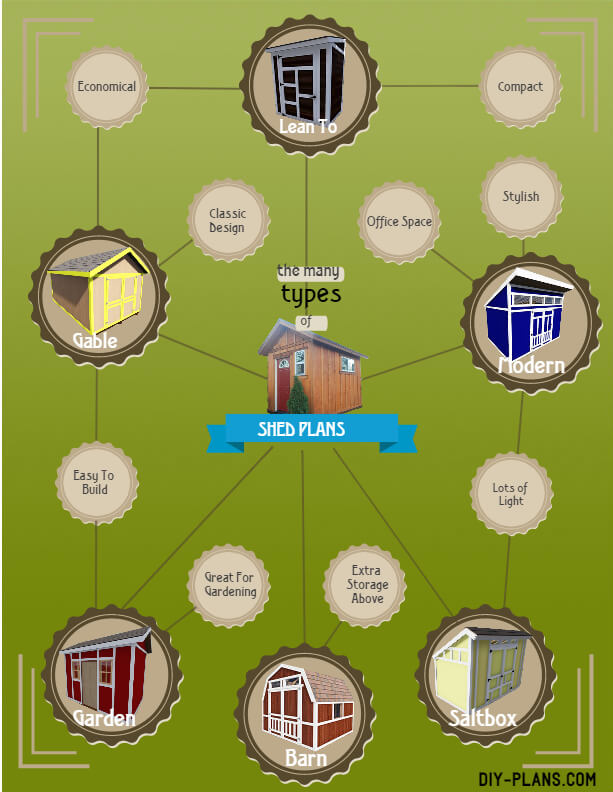
DIY-Plans.com displays this infographic showing the variety of shed styles. Which shed style do you think is best. The different shed styles are named after the roof style. They are: Gable, Gambrel (Barn), Garden, Lean To, Modern, and Saltbox.
Gable Sheds
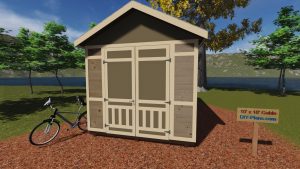
Gable sheds are one of the most popular choices in shed building. They are simple and economical storage solutions because they are so easy to build. Gable sheds have a single sloping plane of the same pitch on both sides of the ridge. The gable style roof pitch ranges from 12/4 to as high as 12/12 but a 12/6 pitch roof is very common in gable sheds. Gable sheds are space creators in that there is storage space available up in the truss area. If you have run out of room in your garage, they style of shed would be the perfect place to store all sorts of things. Search Gable Shed Plans
Gambrel or Barn Sheds
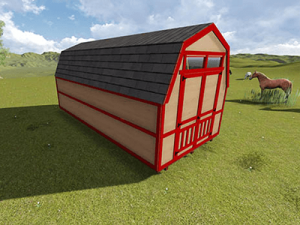
A gambrel or barn shed is a symmetrical two-sided roof with two slopes on each side. Unlike other roofs, a gambrel has a an upper slope that is positioned at a shallow angle, while the lower slope has a much steeper angle. Many older homes and barns have this roof shape so as to allow snow to shed in the winter while maximizing headroom on the second level. It also enables an otherwise tall roof to be shortened by have a shallow angled roof at the top. Barn sheds are great because of the amount of overhead storage space you can achieve using a loft, almost doubling your square footage.
Garden Sheds
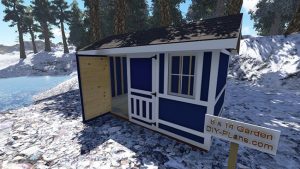
This is the perfect place to store gardening tools and supplies. Typically a garden shed has lots of natural light, a gable roof, and has a door entrance on either the long or short side of the shed. For an even better look, many garden sheds have a covered porch area for potting plants or other gardening chores. Garden shed sizes range wildly from a very small 8×6 to a extra large 16×36. Many people may refer to gable sheds as garden sheds a well. At DIY-Plans, we make a simple distinction between the two. Gable sheds have the door on the short side, and garden sheds have the entrance on the long side. Simple as that. Search Garden Shed Plans
Lean To Sheds
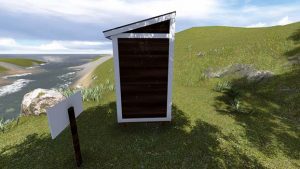
A lean-to shed has only a single sloped roof. One reason for doing this is to place it directly against a wall of a building. Lean to sheds are easy to build and are usually smaller in size. This is great for those who are on a tight budget. If you don??t need to store a ton of stuff, this may be a good option. This type of shed is also known as a shed roof style or flat roof. Search Lean To Shed Plans
Modern Sheds
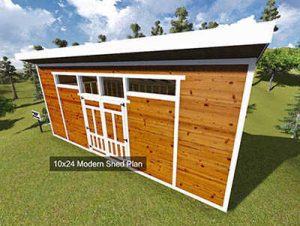
Modern roof sheds have a nice gentile slope. They commonly have a slope between 0-10%. The roof portion of a modern shed is very simple to build. No need to build complex trusses. Just simply install roof rafters across the top of the shed. These sheds are commonly found in backyards with a bit of space around them. They generally are more contemporary in style and are a very popular choice these days. Because the risk of leaking is so great, it is suggested to use a protective membrane, asphalt rolls in place of shingles, and roof cement and finish it off with roof paint. This will ensure a waterproof flat roof shed for many years. Search Modern Shed Plans
Saltbox Sheds
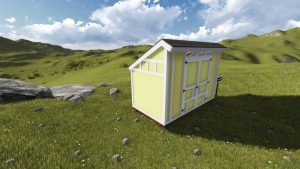
Saltbox sheds feature a long sloped roof in the back of the shed while the front has a short, overhanging roof in the front. It??s an economical way to enlarge your shed. By adding more storage space on one side while maintaining a normal height on the other side you save building costs. Historically, these types of sheds are named after an old fashioned salt bin. Saltbox sheds aren’t as common these days but they are so unique and have a flare that other shed styles don’t have. Search Saltbox Shed Plans


